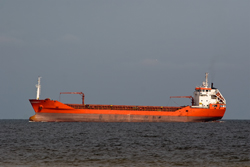Communication is the key to safety at sea
In the wake of devastating oil tanker accidents, technology has been developed for local and regional use. Prime examples include vessel traffic services (VTS), the maritime equivalent of air traffic control and the automatic identification service (AIS) for real-time ship locations and port arrivals. However, there is still a need to improve on these systems. Systems analysts are aware that there is a need to develop more pro-active systems. However, it is important the responsibility should not involve only the vessel or the captain of the ship who should be guiding the tanker. The answer for the EU was an integrated system of control which involves all stakeholders and information together with communication technology. A fusion of services and systems, eMaritime, is being developed and the European funded project Marnis has contributed to its success. Relevant data on a ship is funnelled through a centralised system using the Marnis system which incorporates National Single Windows (NSW). NSW is the central core to which all authorised stakeholders are connected. The data is stored in an electronic database developed by Marnis project, Safeseanet++. Included in vessel traffic management (VTM) is the improvement of search and rescue operations. The question of security, safety and intermodality of ports was also addressed. Exchange of the massive amount of information involved is handled by AIS but when unable to cope, the Marnis broadband platform can be used. The Marnis concept is responsible for the development of a carefully integrated system of well-trained staff, informed stakeholders and state-of-the-art technology. It promises to bring about a high level of maritime safety for crew, passengers, ships and the environment through which they travel.



